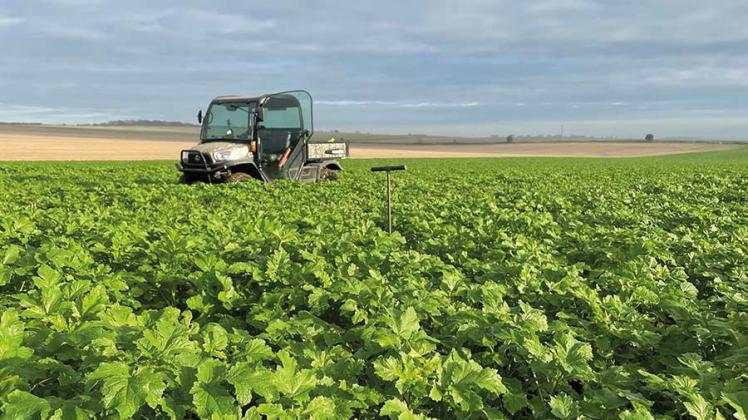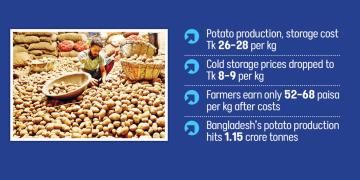Gran Bretaña: Cover crop raises potato yields and cuts establishment costs on N Yorks farm
Growing cover crops before potatoes has reduced the number of cultivation passes and increased yields on a North Yorkshire farm.

Cover crops were first grown ahead of potatoes on James Pick’s family farm near Filey in 2014.
The farm grows a diverse range of arable crops across 450ha, with about 200ha being potatoes, largely for McCains, on rented land.
See also: How to control nematodes in potatoes with a trap crop
The farm has two main aims when growing a cover crop, says Mr Pick. First, add organic matter into the seed-bed by growing as much biomass as possible.
Advertisement
This helps improve resilience during summer droughts, which is important as the potatoes are unirrigated.
James Pick © James Pick
Fewer passes
The other aim is to reduce the number of cultivation passes required before planting the potato crop.
“We’ve seen how much more friable the soil is after growing an overwinter cover crop compared with a bare stubble,” he says.
Establishment would ideally begin from mid-August, but with wheat harvest often dragging into September and baling straw also common on the land they rent, that can be a challenge.
“But in our experience, unless you have an incredibly kind back end, it’s almost pointless to get a cover crop in if we can’t get it planted by 15 September, because you don’t get the growth.”
Originally the covers were drilled with a John Deere 750A direct drill, but on rented land they were too often finding the soils weren’t suitable for direct drilling, with the slot not closing or water sitting in the slot and the seeds rotting.
“We’re now using a Carrier with a seeder unit, or a Horsch Sprinter, which gives you that little bit more tilth and we’re getting better establishment.”
Species
Cover crop species mixes are tweaked depending on field location and rotation, and whether livestock will be available to graze over winter.
On rented land a typical mix is oats, phacelia, mustard, berseem clover and vetch, unless oilseed rape is in the rotation, which leads to brassicas being excluded.
Where sheep are available to graze, the mix is simplified to oats, phacelia, vetch or a clover, fodder rape and stubble turnips.
Cover crop growth has been very variable over the years, depending on land type, location and establishment date.
“We’ve got covers ranging from 3ft high, which we will top, down to 1ft. There’s even big variability across fields.”
Glyphosate is usually used to terminate the cover around eight weeks ahead of primary cultivations, with big covers topped four weeks after the glyphosate to knock them down.
Fuente: https://www.fwi.co.uk/arable/land-preparation/cover-crops/cover-crop-raises-potato-yields-and-cuts-establishment-costs-on-n-yorks-farm




